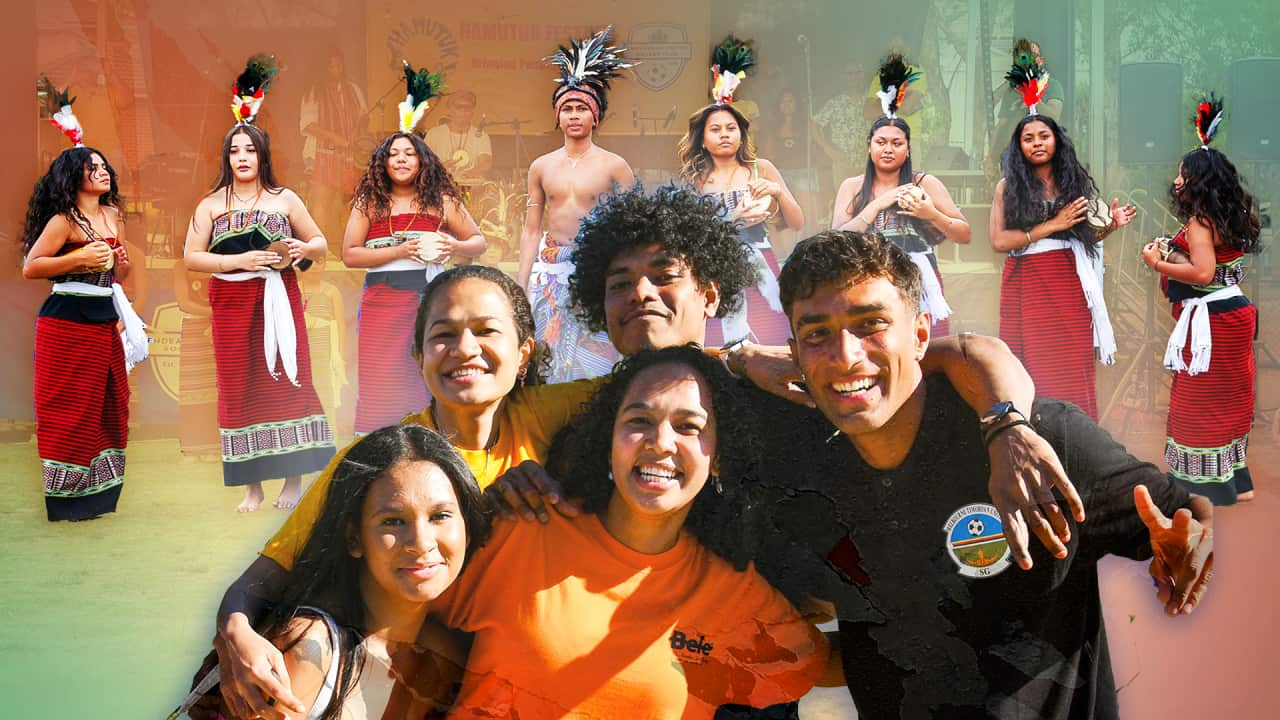In 2025, the Timorese community in Australia commemorates a significant milestone — 50 years since their arrival in 1975.
This moment not only marks a period of survival and resilience, but also underscores the community’s dedication to preserving their cultural heritage.
The largest wave of Timorese migration occurred in the wake of civil unrest and the Indonesian invasion of Timor-Leste in 1975, however, their connection to Australia dates back to World War Two, when small groups first arrived on Australian shores.
Aderito Santos, who came to Australia in late 1970s when he was young, recalls the tumultuous time. He said the first arrival marked a turning point for many Timorese families who fled their homeland in search of safety.
“During the civil war in Timor, my late father took many people to the Dili Port. Some of those who couldn’t make [it] to the port, went to Atambua, West Timor,” Santos told SBS Tetum.
Aderito Santos is a senior member of the Melbourne Timorese community Credit: Supplied / Aderito Santos
Community elder Herminio Da Silva Maia also recounted the chaos of the mid-1970s.
“We left everything behind, not knowing if we’d ever see our home again,” he said.
Stories of resilience and collective struggle
The experience of upheaval and uncertainty is a shared memory within the community, highlighting the gravity and strength of the migration journey.
Jose Casimiro, who arrived in Australia on 25 August 1975, was eight years old when his family fled the violence.
“We stayed at Dili port for nearly a week, waiting for any ship to take us. A Norwegian freight line responded to the SOS and evacuated us,” he said.
His family endured a three-day journey before reaching safety in Darwin.
The Norwegian ship Lyyod Bakke transported Timorese refugees from Timor-Leste to Darwin in August 1975. Credit: Supplied / Jose Pires
Casimiro’s story demonstrates the extreme conditions many Timorese families faced during their migration, and the vital role that international support played in their survival.
For Zelinda de Assis, who also arrived as a child, the escape was equally as dramatic.
“We lived near the port and managed to leave just in time. My father came later, swimming to a ship after being shot,” she said.
Assis’s family eventually settled in Perth, but the journey was marked by deep uncertainty and sacrifice.
Zelinda, as baby in the picture, with her dad registered with Red Cross to find other family members in Timor-Leste. Credit: Supplied / Zelinda de Assis
Settling into a new home and preserving culture
Despite the challenges of starting over in a new country, the Timorese gradually established strong roots in Australia, with large populations now present in Victoria, NSW, NT, WA, and Tasmania. In particular, the Sydney suburb of Liverpool, and Darwin have become central hubs for the diaspora.
For many, survival in Australia meant taking on unskilled jobs, like Jose Pires’ family in Melbourne.
“My father came with no language skills and worked in factories, but he always believed in preserving our culture,” Pires said.
Jose Pires as a young boy stands on the right, with his father (middle) holding his baby sister, standing next to his mother and other siblings who are seated. Credit: Supplied / Jose Pires
His father later played a key role in founding the Timorese Association in Victoria, a cornerstone for the community’s cultural and social integration.
A central theme in preserving the Timorese identity is the Tetum language. For many families, speaking Tetum at home has been a way to maintain a connection to their roots.
Leaders within the community emphasise the need to pass this language on to younger generations born in Australia.
João Ximenes, a former seasonal worker in Tasmania, highlighted the importance of SBS Tetum programming in keeping the language alive.
“It’s great for helping the younger generation in Australia learn about their heritage,” Ximenes said.
Initiatives such as Tetum language classes and cultural festivals also play a crucial role in preserving Timorese traditions. The Hamutuk Festival, for example, is a celebration of Timorese music, dance, and art, helping to unite the community and showcase their heritage.
Traditional dance performance at the Hamutuk Festival. Source: Supplied / Joao Tam / Passion Creations
Shyla Silvina de Lemos Guterres Duarte, who took part in this year’s festival, said it was an opportunity to reconnect with her roots.
“It’s important for me to know where we come from, and this festival allows me to celebrate our Timorese culture with pride,” she said.
Dulce Munn, a Timor-Leste Australian citizen living in Darwin, emphasised The Timor-Leste embassy and consulates’ role in facilitating cultural programs and strengthening ties between the community and their homeland.
“The consulate and embassy will need to collaborate more with the Timorese community to ensure that we stay connected to our roots and provide essential support for our cultural initiatives,” she said.
Built on sacrifice
As the Timorese-Australian community reflects on their 50th anniversary, the significance of this milestone is deeply personal for many individuals.
Assis views the anniversary as a chance to honour the sacrifices of the first generation.
“My parents’ journey was not easy, but their resilience gave us the chance to build a future here,” she said.
Assis hopes to see the establishment of a formal association to better support the Timorese community in Perth.
In Melbourne, Pires and others within the Timorese Association Victoria are planning a celebration of the 50th anniversary, which will feature a photographic exhibition and cultural performances, aimed at honouring the legacy of their parents.
The events for the 50th anniversary is scheduled for 30 August in Melbourne, and 6 September in Perth.
Looking ahead, Santos emphasised the importance of unity and cultural preservation.
“We need to teach the younger generation about our heritage so that it thrives alongside our contributions to Australian society.”





